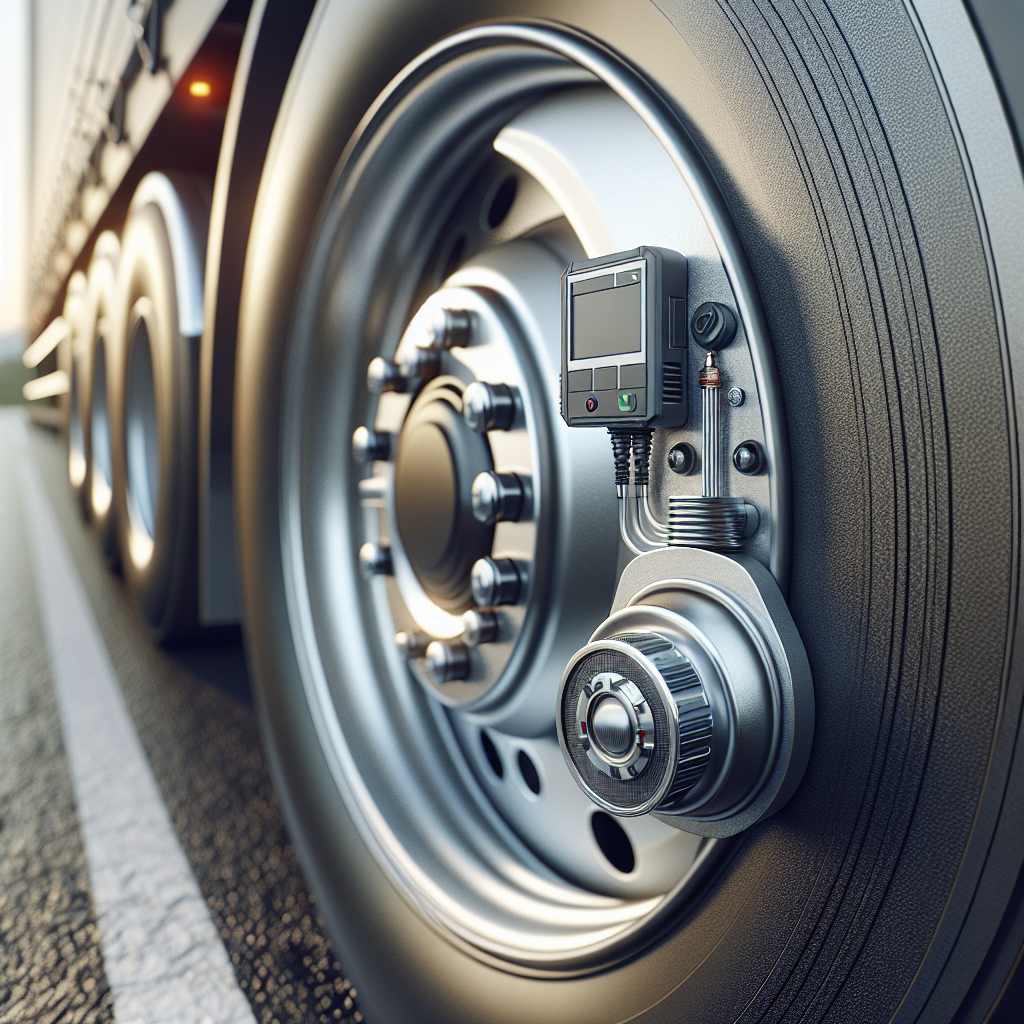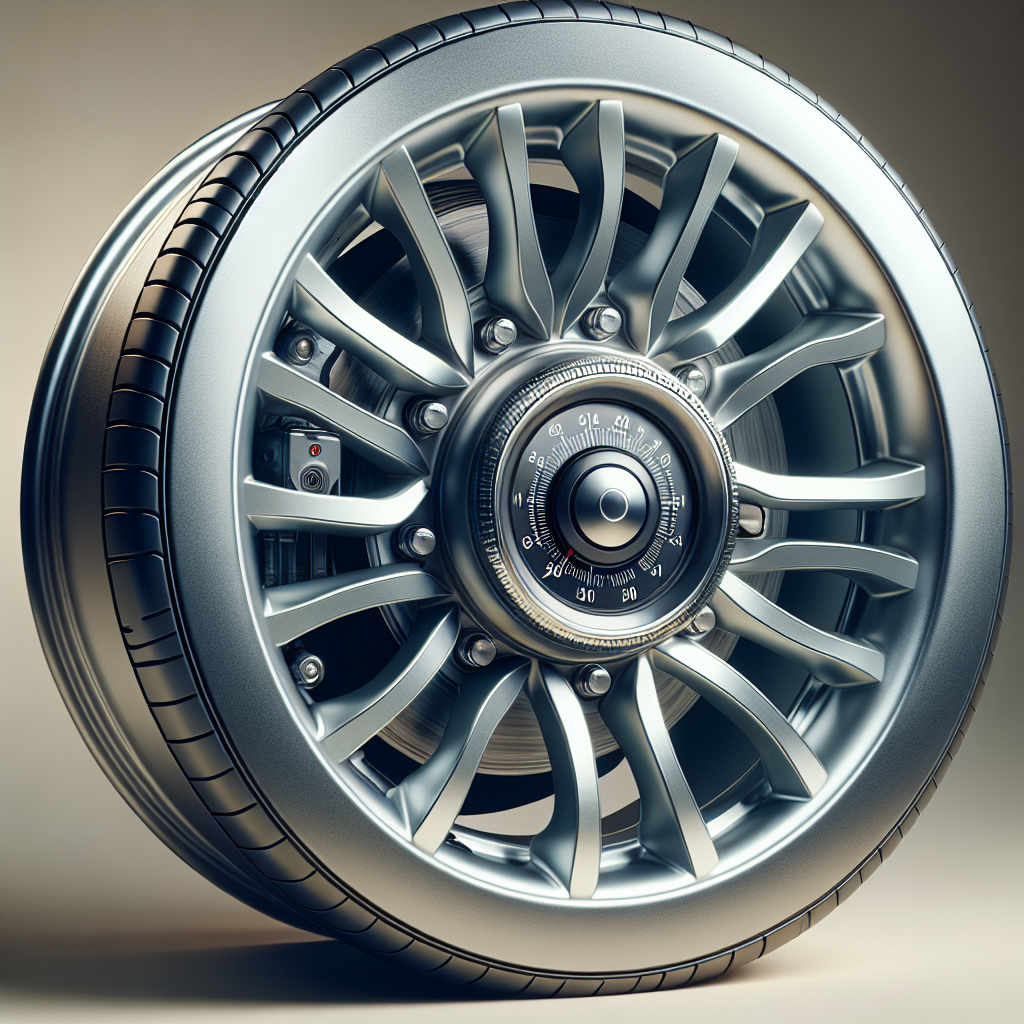Maintaining optimal tire pressure is crucial for safe and efficient driving, particularly when it comes to trailers. Tire pressure sensors play a significant role in this aspect by providing real-time data that can help prevent accidents and extend the lifespan of your tires. Understanding how tire pressure sensors work can illuminate their importance in enhancing road safety.
Tire pressure sensors monitor the air pressure within each tire and relay this information to the driver or a central monitoring system. By keeping track of tire pressure, these sensors help to:
- Improve Fuel Efficiency: Under-inflated tires can lead to increased rolling resistance, which in turn decreases fuel efficiency. By ensuring that tire pressure is at optimal levels, you can save money on fuel.
- Enhance Safety: Properly inflated tires ensure better traction, handling, and braking, which significantly reduces the risk of losing control while on the road. Tire pressure sensors alert drivers to any significant drops in tire pressure, allowing for timely intervention.
- Prevent Tire Blowouts: A sudden loss of tire pressure can lead to catastrophic blowouts. Tire pressure sensors detect these changes early, giving drivers the chance to pull over safely and avoid dangerous situations.
With the advancement of technology, tire pressure sensors have become more sophisticated, integrating seamlessly with trailer monitoring systems. This integration allows for a comprehensive view of tire health, ensuring that you can tow with confidence. Tow with peace of mind, knowing that trailerwatchdog is standing guard. Visit trailerwatchdog.com to learn more about our innovative trailer monitoring solutions.
How Tire Pressure Sensors Function in Real-Time

Tire pressure sensors operate in real-time, providing critical data that can significantly impact vehicle safety and performance. Understanding the functionality of these sensors helps in appreciating their role in modern trailer systems.
There are generally two types of tire pressure monitoring systems (TPMS): direct TPMS and indirect TPMS. Both systems serve the same purpose but utilize different methods to gather tire pressure data.
Direct TPMS employs sensors mounted on each tire valve stem. These sensors measure the tire's pressure directly and transmit the information wirelessly to the vehicle's onboard computer. This system offers real-time updates and typically activates a warning light if the pressure falls below a set threshold. Key features include:
- Accuracy: Direct TPMS provides precise pressure readings, making it easier for drivers to maintain optimal tire conditions.
- Immediate Alerts: The system can promptly alert the driver to any significant changes in tire pressure, allowing for quick action.
On the other hand, indirect TPMS does not have direct sensors on the tires. Instead, it relies on the vehicle's ABS (anti-lock braking system) to monitor wheel speed. If a tire is under-inflated, its diameter decreases, which causes it to rotate faster than the others. This system can be less accurate but is still effective in providing warnings when tire pressure deviates from normal levels.
Regardless of the system used, the integration of tire pressure sensors into trailer monitoring systems is essential for ensuring safe towing practices. They allow drivers to receive vital information instantly, which can make all the difference on the road.
Types of Tire Pressure Monitoring Systems

Understanding the types of tire pressure monitoring systems (TPMS) is crucial for effectively maintaining tire health and ensuring safety on the road. These systems are categorized primarily into two types: direct TPMS and indirect TPMS, each with its own unique features and advantages.
Direct TPMS involves the installation of sensors directly on each tire. These sensors measure tire pressure in real-time and transmit the data to the vehicle's onboard computer system. The key benefits of direct TPMS include:
- Real-time Monitoring: Provides accurate, live updates on tire pressure, allowing for proactive management.
- Early Warning System: Alerts drivers immediately if tire pressure falls below recommended levels, reducing the risk of blowouts.
- Temperature Monitoring: Some advanced direct systems can also track tire temperature, further enhancing safety.
Alternatively, indirect TPMS utilizes existing vehicle systems, such as the anti-lock braking system (ABS), to monitor tire pressure indirectly. This system detects changes in wheel rotation and can identify under-inflated tires based on differences in speed. While indirect TPMS is generally less precise than direct TPMS, it still plays a vital role in maintaining tire safety:
- Cost-Effective: Often less expensive to implement since it doesn’t require additional sensors.
- No Additional Hardware: Leverages existing vehicle technology, making installation simpler.
Some modern vehicles utilize a hybrid approach, combining both direct and indirect systems to maximize safety and performance. As technology progresses, tire pressure monitoring systems are becoming increasingly sophisticated, offering enhanced features that contribute to safer driving experiences.
Benefits of Using Tire Pressure Sensors for Safety

The integration of tire pressure sensors into vehicles and trailers offers numerous benefits that significantly enhance safety on the road. Understanding these advantages is essential for anyone who values performance and reliability in their transportation.
One of the primary benefits is improved safety. By providing real-time data on tire pressure, these sensors help drivers maintain optimal tire conditions, reducing the likelihood of blowouts and accidents caused by under-inflated tires. The statistics are compelling: vehicles with properly inflated tires can improve fuel efficiency, reduce tire wear, and enhance handling, especially in adverse weather conditions.
Another key benefit is the enhanced fuel efficiency. Properly inflated tires minimize rolling resistance, allowing vehicles to operate more efficiently. This can lead to significant savings on fuel costs over time, especially for those who frequently tow trailers or drive long distances. Moreover, maintaining proper tire pressure can extend the lifespan of the tires, reducing replacement costs and waste.
Additionally, tire pressure sensors contribute to increased awareness. Modern systems often provide alerts to drivers when tire pressure drops below safe levels, enabling proactive measures to be taken before a small issue becomes a major problem. This real-time monitoring fosters a culture of preventive maintenance, ensuring that drivers can address potential issues before they escalate.
Lastly, the installation of tire pressure sensors can enhance overall vehicle performance. Well-maintained tires ensure better traction, handling, and braking performance, all of which are crucial for safe driving. By investing in tire pressure monitoring technology, drivers are not only protecting their investment but are also prioritizing their safety and that of others on the road.
Common Issues with Tire Pressure Sensors

While tire pressure sensors are invaluable for enhancing safety and performance, they are not without their challenges. Understanding these common issues can help drivers and fleet managers maintain optimal functionality and ensure their systems are working effectively.
One prevalent issue is sensor malfunction. Tire pressure sensors can sometimes fail due to electrical issues, corrosion, or damage from road debris. If a sensor malfunctions, it may give inaccurate readings or fail to alert the driver to low tire pressure, compromising safety. Regular checks and timely replacements are essential to mitigate this risk.
Another common concern is battery life. Many tire pressure sensors are battery-operated, and over time, these batteries can deplete. A dying battery can lead to loss of functionality and false alerts. It is crucial for vehicle owners to be aware of their sensor battery life and to replace them as necessary, usually every 5 to 10 years depending on the sensor model.
Additionally, temperature variations can affect sensor performance. Tire pressure can fluctuate with changes in temperature, leading to potential false alerts. Drivers should be educated about these variations and understand that tires may require adjustments in pressure as seasons change.
Moreover, some drivers may experience issues with incompatibility between tire pressure sensors and their vehicle's onboard systems. When retrofitting older vehicles with new sensor technology, compatibility issues may arise, leading to performance problems. Consulting with manufacturers or professional installers can alleviate these concerns.
Lastly, poor installation can result in sensor issues. Proper installation is vital for ensuring that sensors function correctly. If sensors are not installed according to manufacturer specifications, they may not provide accurate readings, undermining their effectiveness.
Future Innovations in Tire Pressure Sensor Technology
The landscape of tire pressure sensor technology is evolving rapidly, driven by advancements in automotive engineering and the demand for enhanced safety features. Future innovations promise to revolutionize how we monitor tire conditions, making it even easier to maintain optimal performance on the road.
One exciting direction is the integration of smart technology into tire pressure monitoring systems. Imagine sensors that not only track pressure but also communicate with your smartphone or vehicle’s infotainment system. This connectivity can provide real-time data and alerts, allowing drivers to make informed decisions about tire maintenance at their fingertips.
Additionally, the development of self-calibrating sensors is on the horizon. These advanced systems can automatically adjust and calibrate themselves based on tire pressure fluctuations and environmental factors. This innovation would reduce the need for manual adjustments and enhance the overall reliability of tire monitoring.
Moreover, solar-powered sensors are being explored to eliminate battery dependency altogether. By harnessing solar energy, these sensors could offer a sustainable solution that significantly extends their operational lifespan and minimizes maintenance efforts.
Another promising area of research is the use of machine learning algorithms to predict tire issues before they occur. By analyzing historical data and patterns, these algorithms can provide proactive alerts about potential failures, allowing drivers to take preventative measures and avoid catastrophic events.
As these innovations take shape, it’s crucial for vehicle owners and fleet operators to stay informed. Tow with peace of mind, knowing that TrailerWatchdog is standing guard. With our advanced trailer monitoring system, you can ensure that your tires are always in optimal condition, enhancing safety and performance on the road. For more information, visit trailerwatchdog.com.

